Regulation of Nephron Progenitor Cell Self-Renewal by Intermediary Metabolism
- PMID: 28754792
- PMCID: PMC5661282
- DOI: 10.1681/ASN.2016111246
Regulation of Nephron Progenitor Cell Self-Renewal by Intermediary Metabolism
Abstract
Nephron progenitor cells (NPCs) show an age-dependent capacity to balance self-renewal with differentiation. Older NPCs (postnatal day 0) exit the progenitor niche at a higher rate than younger (embryonic day 13.5) NPCs do. This behavior is reflected in the transcript profiles of young and old NPCs. Bioenergetic pathways have emerged as important regulators of stem cell fate. Here, we investigated the mechanisms underlying this regulation in murine NPCs. Upon isolation and culture in NPC renewal medium, younger NPCs displayed a higher glycolysis rate than older NPCs. Inhibition of glycolysis enhanced nephrogenesis in cultured embryonic kidneys, without increasing ureteric tree branching, and promoted mesenchymal-to-epithelial transition in cultured isolated metanephric mesenchyme. Cotreatment with a canonical Wnt signaling inhibitor attenuated but did not entirely block the increase in nephrogenesis observed after glycolysis inhibition. Furthermore, inhibition of the phosphatidylinositol 3-kinase/Akt self-renewal signaling pathway or stimulation of differentiation pathways in the NPC decreased glycolytic flux. Our findings suggest that glycolysis is a pivotal, cell-intrinsic determinant of NPC fate, with a high glycolytic flux supporting self-renewal and inhibition of glycolysis stimulating differentiation.
Keywords: Cell Signaling; Differentiation; Glycolysis; PI3K/Akt; Stem Cell Renewal; kidney development.
Copyright © 2017 by the American Society of Nephrology.
Figures


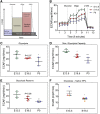
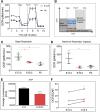
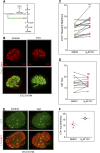

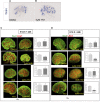
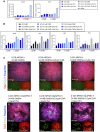

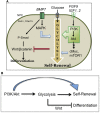
Comment in
-
New Insights into Fuel Choices of Nephron Progenitor Cells.J Am Soc Nephrol. 2017 Nov;28(11):3133-3135. doi: 10.1681/ASN.2017070795. Epub 2017 Sep 5. J Am Soc Nephrol. 2017. PMID: 28874403 Free PMC article. No abstract available.
Similar articles
-
Nephron progenitor cell commitment: Striking the right balance.Semin Cell Dev Biol. 2019 Jul;91:94-103. doi: 10.1016/j.semcdb.2018.07.017. Epub 2018 Jul 30. Semin Cell Dev Biol. 2019. PMID: 30030141 Review.
-
Concurrent BMP7 and FGF9 signalling governs AP-1 function to promote self-renewal of nephron progenitor cells.Nat Commun. 2015 Dec 4;6:10027. doi: 10.1038/ncomms10027. Nat Commun. 2015. PMID: 26634297 Free PMC article.
-
The PI3K pathway balances self-renewal and differentiation of nephron progenitor cells through β-catenin signaling.Stem Cell Reports. 2015 Apr 14;4(4):551-60. doi: 10.1016/j.stemcr.2015.01.021. Epub 2015 Mar 5. Stem Cell Reports. 2015. PMID: 25754203 Free PMC article.
-
A synthetic niche for nephron progenitor cells.Dev Cell. 2015 Jul 27;34(2):229-41. doi: 10.1016/j.devcel.2015.06.021. Epub 2015 Jul 16. Dev Cell. 2015. PMID: 26190145 Free PMC article.
-
Epigenetic States of nephron progenitors and epithelial differentiation.J Cell Biochem. 2015 Jun;116(6):893-902. doi: 10.1002/jcb.25048. J Cell Biochem. 2015. PMID: 25560433 Free PMC article. Review.
Cited by
-
Canagliflozin Prevents Intrarenal Angiotensinogen Augmentation and Mitigates Kidney Injury and Hypertension in Mouse Model of Type 2 Diabetes Mellitus.Am J Nephrol. 2019;49(4):331-342. doi: 10.1159/000499597. Epub 2019 Mar 28. Am J Nephrol. 2019. PMID: 30921791 Free PMC article.
-
Comparative whole-genome transcriptome analysis in renal cell populations reveals high tissue specificity of MAPK/ERK targets in embryonic kidney.BMC Biol. 2022 May 13;20(1):112. doi: 10.1186/s12915-022-01309-z. BMC Biol. 2022. PMID: 35550069 Free PMC article.
-
Omics profiling identifies the regulatory functions of the MAPK/ERK pathway in nephron progenitor metabolism.Development. 2022 Oct 1;149(19):dev200986. doi: 10.1242/dev.200986. Epub 2022 Oct 3. Development. 2022. PMID: 36189831 Free PMC article.
-
Estrogen receptor profiles across tissues from male and female Rattus norvegicus.Biol Sex Differ. 2019 Jan 11;10(1):4. doi: 10.1186/s13293-019-0219-9. Biol Sex Differ. 2019. PMID: 30635056 Free PMC article.
-
Sirtuins in kidney health and disease.Nat Rev Nephrol. 2024 May;20(5):313-329. doi: 10.1038/s41581-024-00806-4. Epub 2024 Feb 6. Nat Rev Nephrol. 2024. PMID: 38321168 Review.
References
-
- Hoy WEH, Hughson MD, Singh GR, Douglas-Denton R, Bertram JF: Reduced nephron number and glomerulomegaly in Australian Aborigines: A group at high risk for renal disease and hypertension. Kidney Int 70: 104–110, 2006 - PubMed
MeSH terms
Grants and funding
LinkOut - more resources
Full Text Sources
Other Literature Sources

